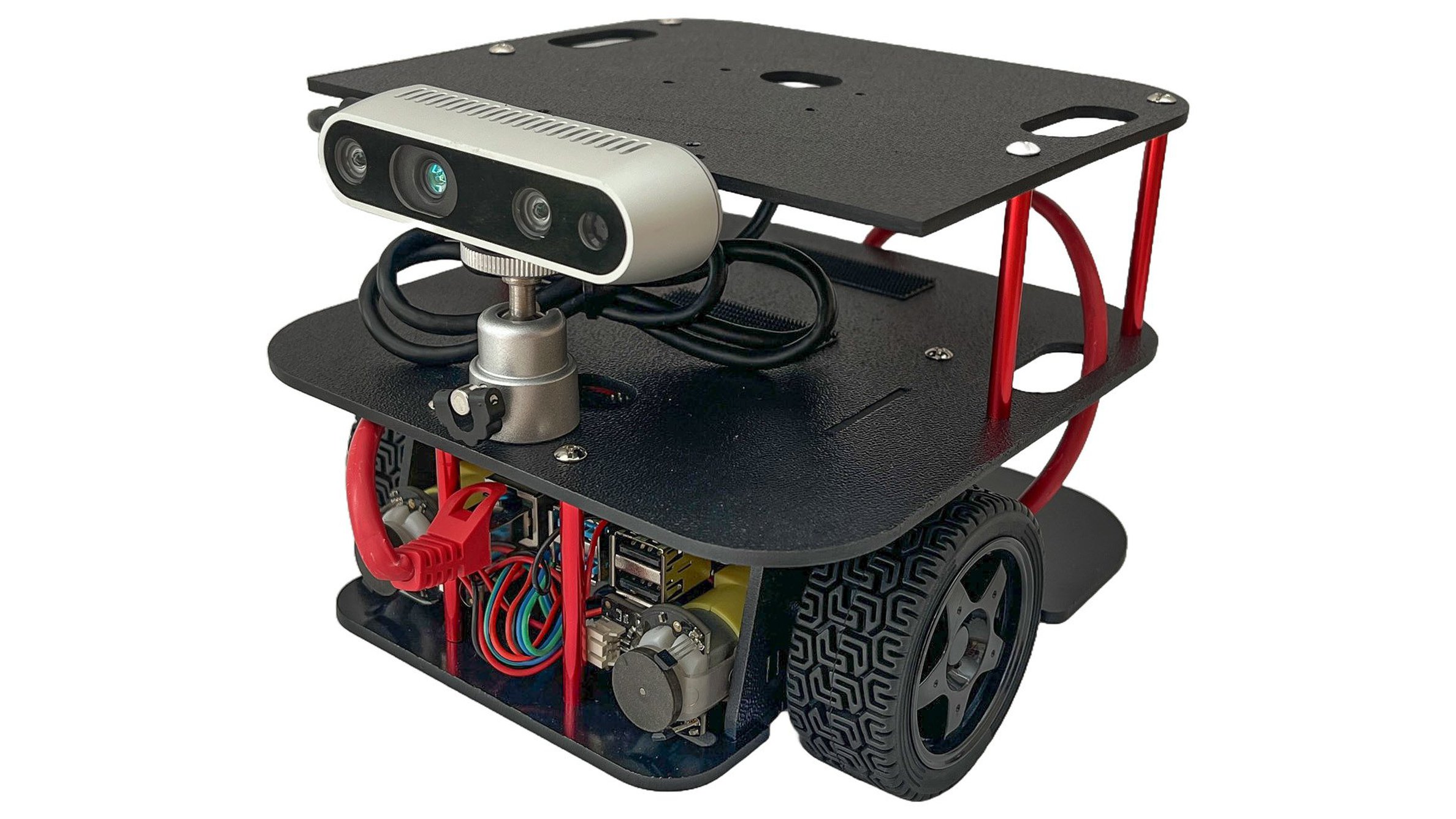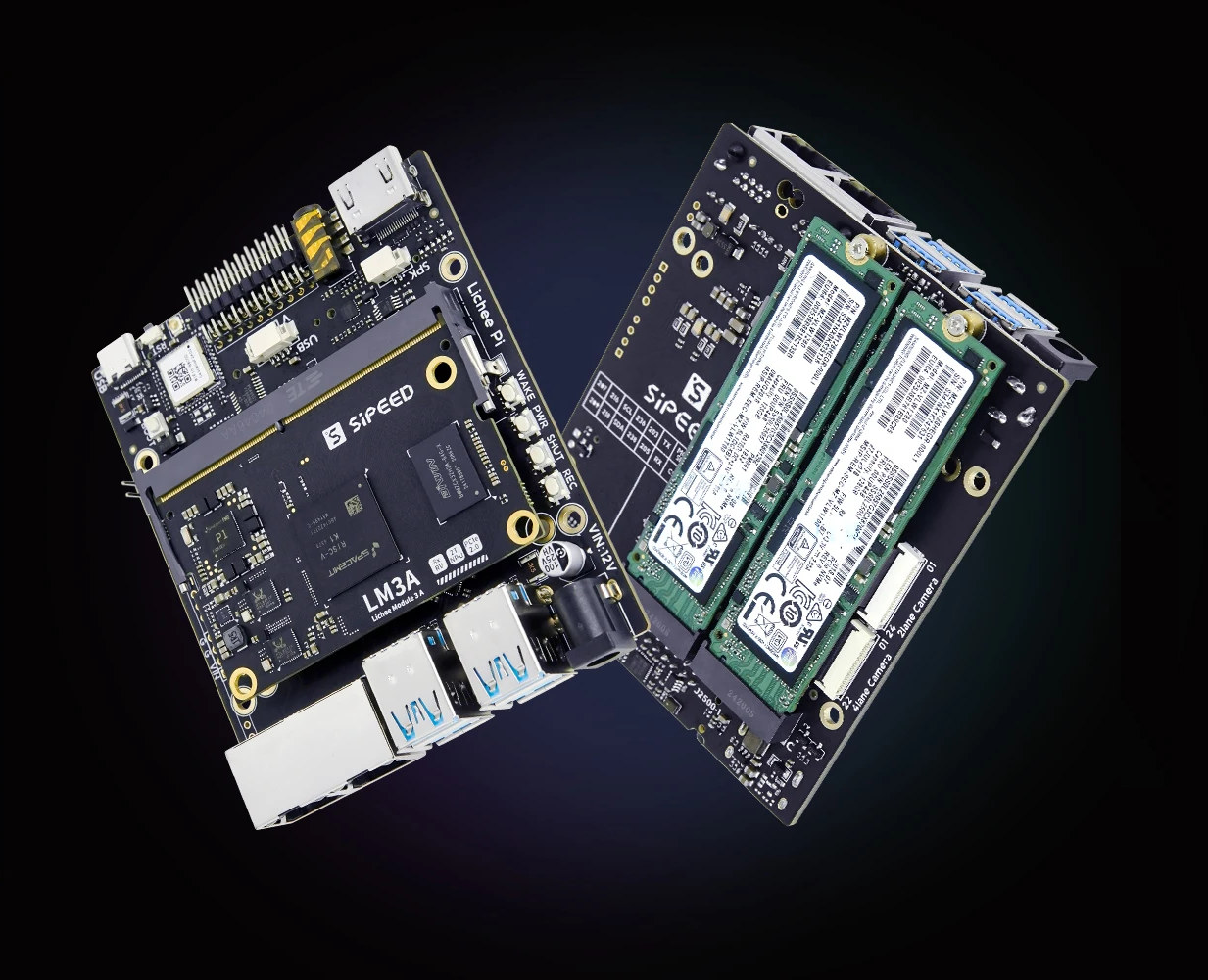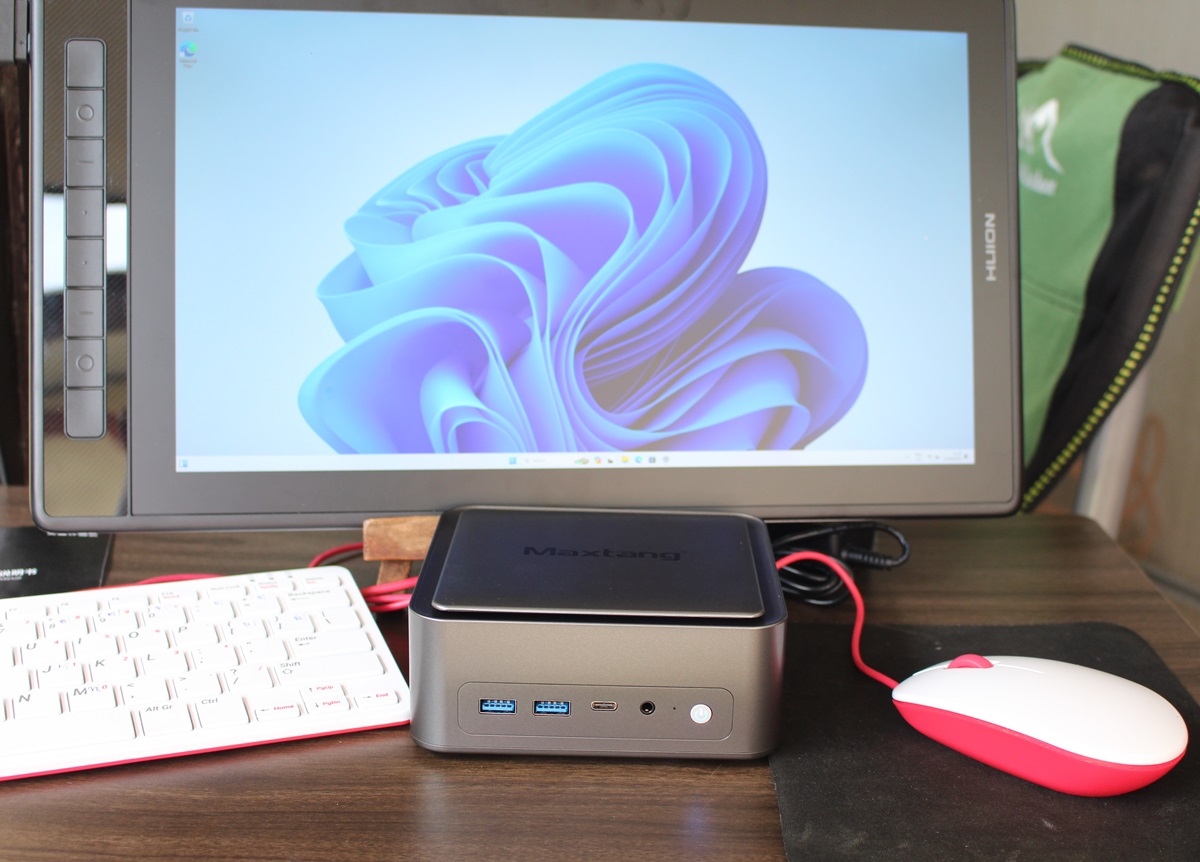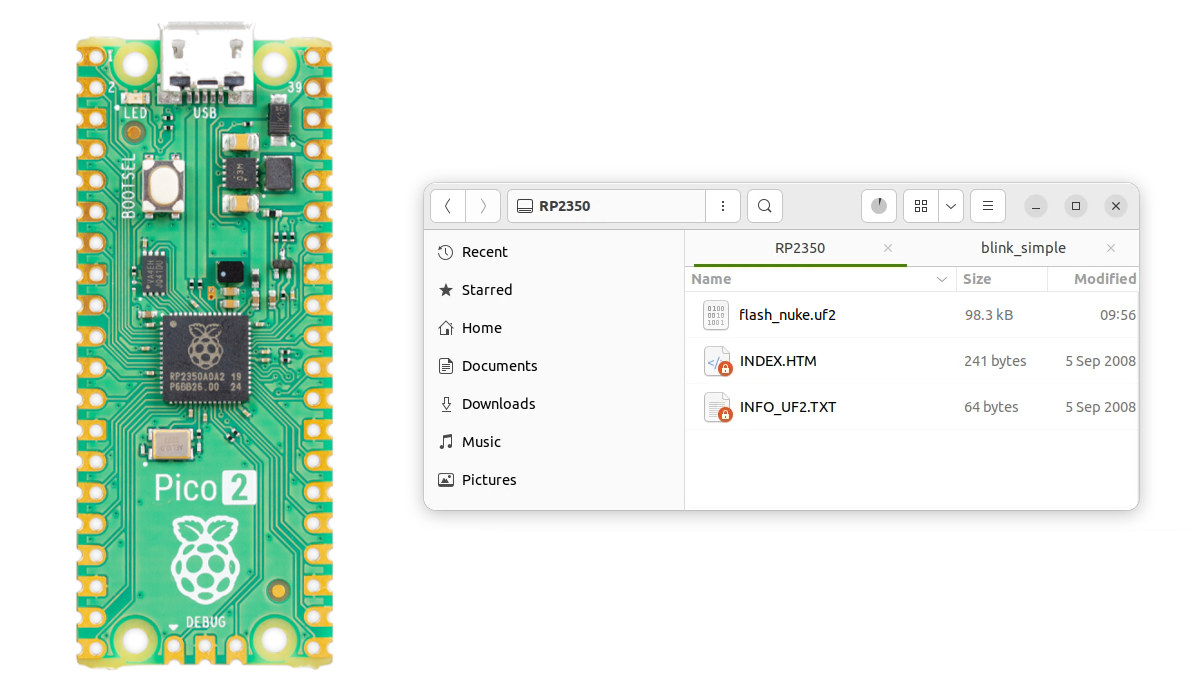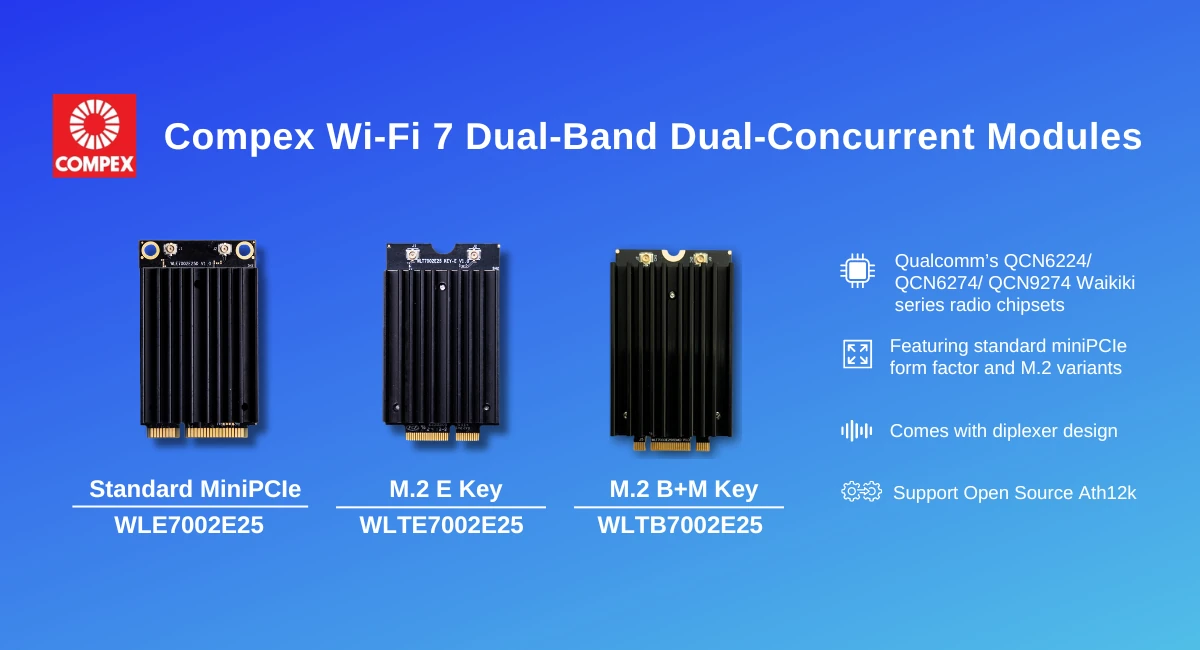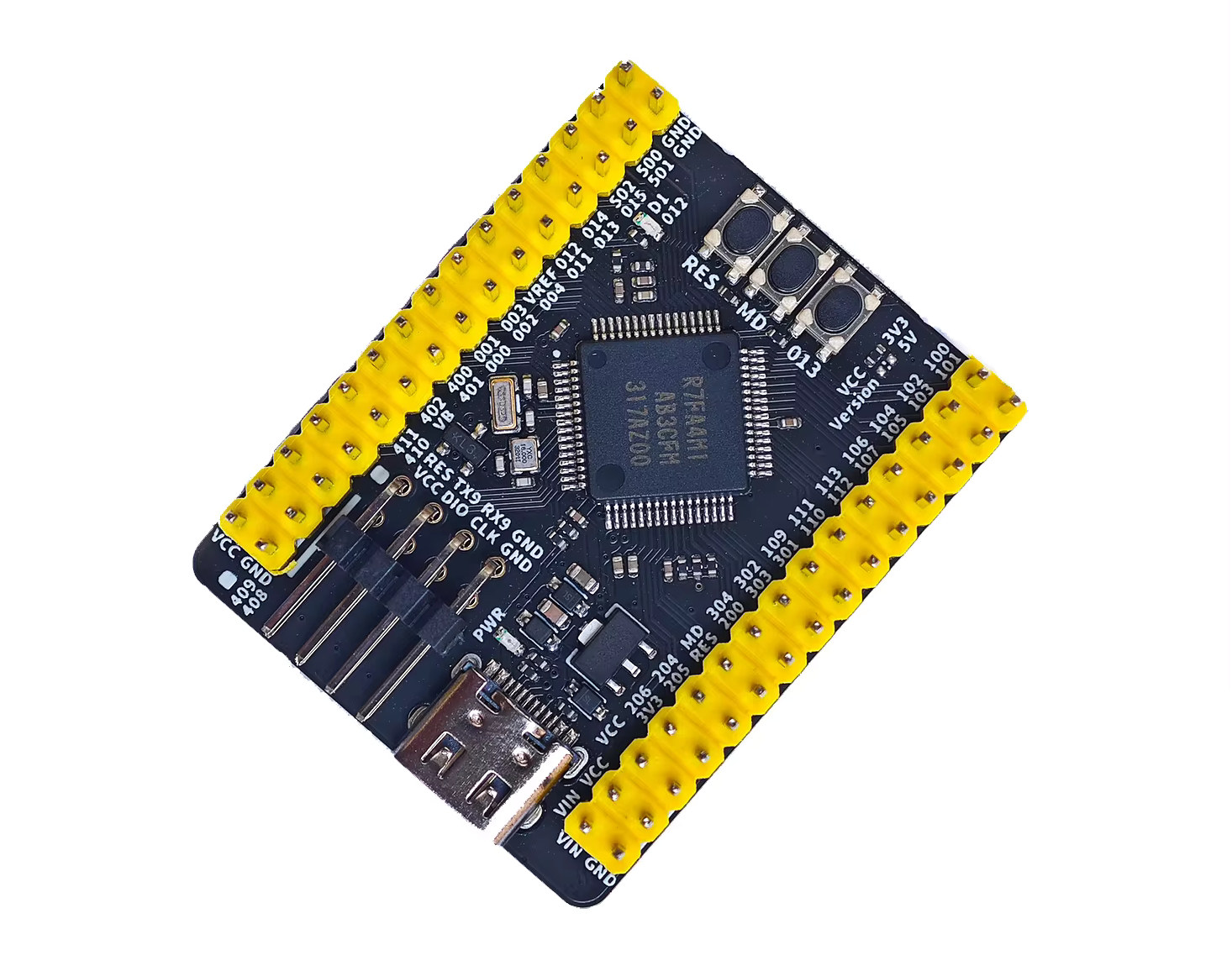The MIKRIK V2 Robot Car is an open-source robotics kit for studying 3D computer vision and is compatible with both ROS1 and ROS2 software suites. The two-wheel-drive robot is powered by a Raspberry Pi 4 Model B (as a ROS1 differential drive controller) and a more powerful x86 or ARM single-board computer that can support ROS2 applications like the LattePanda Delta 3, Intel NUC, or NVIDIA Jetson Nano. The robot car uses the Intel Realsense D435i camera for 3D depth vision. It is a less expensive alternative to the iRobot Create, Husarion, and TurtleBot, and compares favorably with NVIDIA’s open-source JetBot AI robot platform. The robot car’s chassis is squared-off and made from shatterproof flex plastic. The CAD files are available on GitHub for self-assembly using a laser cutter and a 3D printer. The assembly and setup process is documented on the Hackster project page. On the software end, it […]
LicheePi 3A – A SpacemIT K1 RISC-V development board with SoM and carrier board
Sipeed LicheePi 3A is a development board comprised of the LM3A system-on-module based on SpacemIT K1 octa-core RISC-V SoC and the same baseboard as found in the earlier LicheePi 4A equipped with a T-Head TH1520 quad-core RISC-V “LM4A” system-on-module instead. The LicheePi 3A is currently offered with a 32GB eMMC flash and 8GB or 16GB LPDDR4x memory. The carrier board provides a microSD card, two M.2 PCIe sockets for storage or other expansion, two gigabit Ethernet ports, a WiFi 6 and Bluetooth 5.2 module, HDMI and MIPI DSI display interfaces, two MIPI CSI camera interfaces, four USB 3.0 ports, and a 20-pin GPIO header for expansion. Sipeed LicheePi 3A specifications: Sipeed LM3A SoM SoC – SpacemiT K1 CPU – 8-core X60 RISC-V processor @ 1.6 GHz GPU – Imagination IMG BXE-2-32 with support for OpenGL ES3.2, Vulkan 1.2, OpenCL 3.0; 20 GFLOPS VPU – H.265 and H.264 1080p60 decoding/encoding NPU […]
Bluetooth 6.0 features accurate two-way ranging using Channel Sounding, latency reduction, improved scanning efficiency, and more
The Bluetooth Special Interest Group (SIG) has just announced the release of the Bluetooth 6.0 Core Specification with features and feature enhancements that include Bluetooth Channel Sounding for two-way ranging between BLE devices, decision-based advertising filtering and monitoring advertisers to improve device scanning efficiency, an enhancement to the Isochronous Adaptation Layer (ISOAL) for lower latency and higher reliability, the LL extended feature set, and a frame space update for throughput optimization. Bluetooth 5.4 was released as a minor update mostly adding electronic shelf label (ESL) support in February 2023, or about 18 months ago, but Bluetooth 6.0 is a major update with the most notable feature being Bluetooth Channel Sounding to enable two-way ranging between two Bluetooth LE devices. It’s not the first time we’ve heard about “Bluetooth Channel Sounding” for distance measurements as it was implemented in WiFi 7/6 and Bluetooth 5.4 chipsets such as Synaptics SYN4382 and Broadcom […]
Maxtang T0-FP750 (AMD Ryzen 7 8845HS) mini PC review – Part 1: Specs, unboxing, teardown, and first boot
Maxtang T0-FP750 is a mini PC powered by an AMD Ryzen 7 8845HS octa-core/sixteen-thread SoC supporting up to 64GB 5600 MT/s dual-channel DDR5 SO-DIMM memory, equipped with two M.2 slots for up to NVMe 2280 SSDs, and an additional M.2 slot for a WiFi 6E and Bluetooth 5.2 module. The Windows 11 Pro mini computer can drive up to three displays via HDMI 2.0, USB4, and DisplayPort 1.4 connectors and offers 2.5GbE networking. Maxtang sent us a review sample of the T0-FP750 mini PC with 32GB DDR5 RAM, a 512GB M.2 SSD, and a WiFi 6E and Bluetooth 5.2 wireless module. Despite having a similar name to the earlier AMD Ryzen 7 7735HS-powered Maxtang MTN-FP750 mini PC reviewed last December, the T0-FP750 design is fairly different as we’ll see below. As usual, we’ll do a three-part review starting with the specifications, an unboxing, a teardown, and a quick first try […]
How to recover a “bricked” Raspberry Pi Pico 2 or other RP2350 board
In theory, it’s close to impossible to brick your Raspberry Pi Pico 2 or other RP2350 boards because the bootrom code (source code) is stored in the 32KB ROM of the microcontroller and is by definition “read-only memory”. But I managed to “brick” my Raspberry Pi Pico 2 the other day, and even a blinky sample would not run on the board. So I’ll explain a simple method to recover/perform a factory reset of sorts. First, let me explain what happened. My board became unusable after I ran the following command while building RISC-V Linux for RP2035 and my Pico 2 was connected to the build machine:
|
1 |
make flash-kernel |
At some point, it will copy a UF2 firmware binary designed for boards with PSRAM which the Raspberry Pi Pico 2 lacks:
|
1 |
cp build/psram-bootloader.uf2 "/media/jaufranc/RP2350"/ |
After that, I could still see the Raspberry Pi Pico 2 board as an “RP2350” drive on my computer, […]
Compex unveils new Wi-Fi 7 dual-band dual-concurrent modules: WLE7002E25, WLTE7002E25 and WLTB7002E25 (Sponsored)
Compex Systems (Compex) announces the latest additions to its Wi-Fi 7 modules, WLE7002E25, WLTE7002E25, and WLTB7002E25, expanding its Wi-Fi 7 solution lineup. The updated lineup now includes M.2 variants to its popular dual-band Wi-Fi 7 modules. The new WLE7002E25, one of the first in the industry to feature a standard mini PCIe form factor, promises enhanced wireless performance and reliability at Wi-Fi 6 prices. The similar-sized WLTE7002E25 with an M.2 E Key and WLTB7002E25 with an M.2 B+M Key further broaden the versatility of Compex’s Wi-Fi 7 solutions. Powered by Qualcomm’s QCN6224, QCN6274, and QCN9274 Waikiki series radio chipsets, the new WLE/WLTE/WLTB7002E25 are dual-band dual-concurrent 2.4+5GHz Wi-Fi 7 (802.11be) modules, offering wider signal coverage by transmitting both bands concurrently, reducing latency with Multi-Link Operation (MLO) support, featuring OFDMA and 4096 QAMs. Delivering up to 20dBm per chain, these 2×2 MU-MIMO models are ideal for enterprise, industrial, cybersecurity, transportation, and SMB applications. […]
WeAct RA4M1 – A small board with plenty of GPIOs that’s software-compatible with the Arduino UNO R4
Last week, we covered the Maker Go RA4M1-R4 development board, an inexpensive “clone” of the Arduino UNO R4 Minima with some small modifications like support for up to 50V DC input and a 3.3V/5V switch for I/Os. But today, I’ve come across a smaller and cheaper Renesas RA4M1 board that’s also software compatible with the Arduino UNO R4. Meet the WeAct RA4M1. The WeAct RA4M1 is mostly a breakout board for the Renesas R7FA4M1AB3CFM Arm Cortex-M4F microcontroller with two 30-pin GPIO headers, a USB-C port for power and programming, and three buttons. It offers a middle ground between the Arduino UNO R4 Minima and the tiny XIAO RA4M1 USB-C board. WeAct RA4M1 specifications: Microcontroller – Renesas RA4M1 Arm Cortex-M4F MCU @ 48 MHz with 32KB SRAM, 256KB flash USB – 1x USB Type-C port for power and programming Expansion 2x 30-pin headers with GPIO, VIN, VCC, GND 3.3V or 5V […]
T1000-E Card Tracker is a thin, credit card-sized GPS tracker with Meshtastic support
Seeed Studio has introduced the T1000-E, an updated version of the SenseCAP T1000 Card Tracker, built for Meshtastic. This rugged tracker is compact, about the size of a credit card, making it easy to carry or attach to assets. It uses Semtech LR1110 RF transceiver, Nordic Semi nRF52840 wireless SoC, and MediaTek/Aihora AG3335 GPS module for precise, low-power tracking and communication. With an IP65 rating for dust and water resistance, the T1000-E is ideal for reliable asset tracking. The T1000-E supports LoRa and Bluetooth v5.1 for communication and includes a 3-axis accelerometer, an LED, a buzzer, and a button for operation. It has internal antennas for GNSS, LoRa, Wi-Fi, and BLE communication range of 2 to 5 km, depending on the environment. SenseCAP Card Tracker T1000-E specifications: SoC – Nordic Semiconductor nRF52840 CPU – 32-bit Cortex-M4 core with FPU running at 64 MHz Flash – 1 MB RAM – 256 kB […]


